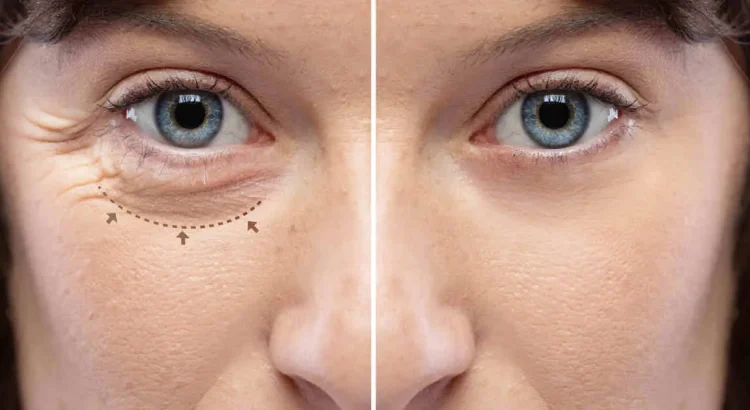Welcome to my blog post all about blepharoplasty, a popular cosmetic surgery procedure that focuses on rejuvenating the eyelids. In this post, we will delve into the details of what blepharoplasty is, the different types of procedures available, and why Istanbul has become a top destination for those seeking this surgery. We will also discuss how to prepare for the surgery, the step-by-step process of the procedure, and the recovery process afterwards. Additionally, we will address any potential risks or complications, provide tips for a smoother recovery, and highlight the long-term effects and results you can expect. Lastly, we will touch on the cost of blepharoplasty in Istanbul, how to choose the right surgeon, showcase patient testimonials and reviews, and answer frequently asked questions about this procedure. So sit back, relax, and let’s explore the world of blepharoplasty together.
Contents;
What Is Blepharoplasty?
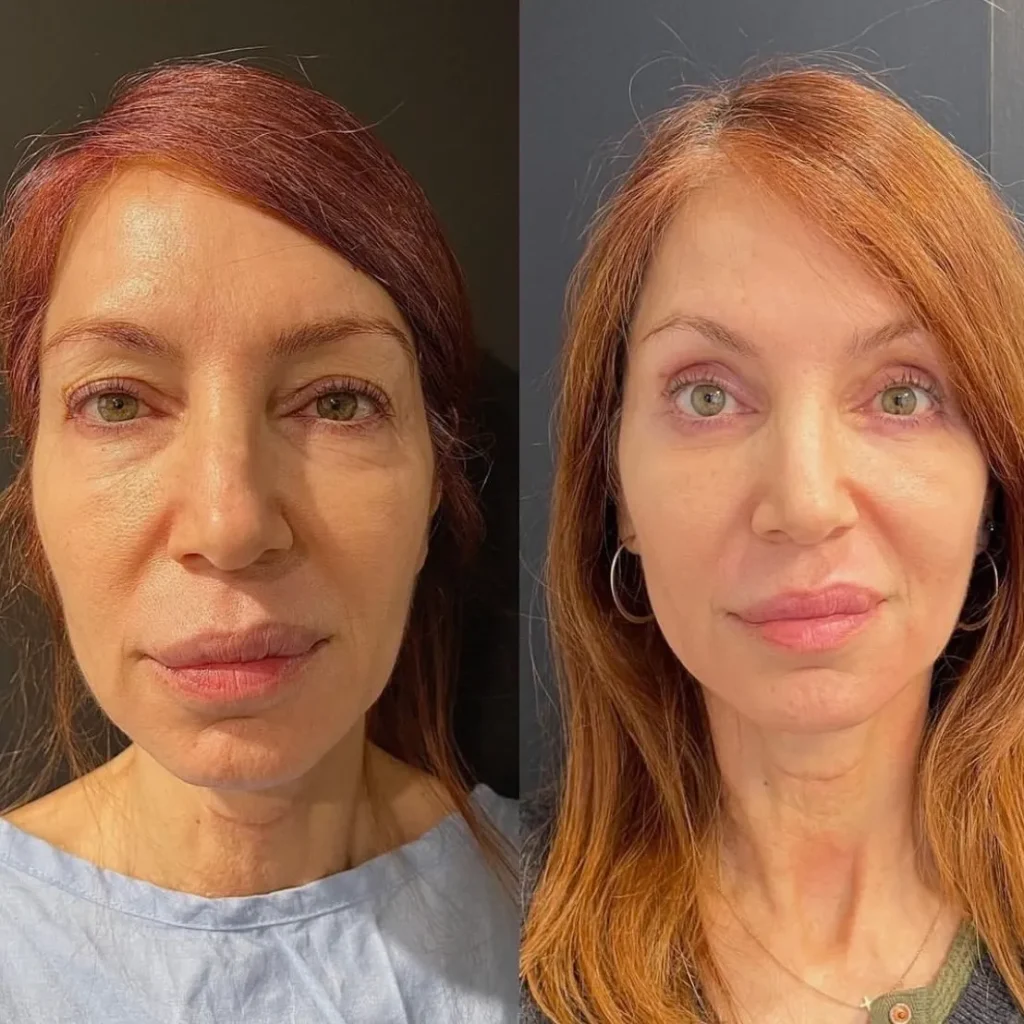
Blepharoplasty is a surgical procedure that is performed to improve the appearance of the eyelids. It involves removing excess skin, fat, and muscle from the upper and/or lower eyelids. This procedure can help to rejuvenate the eyelids, making the eyes look more youthful and refreshed. Blepharoplasty can be performed for both cosmetic and functional reasons. Some individuals may choose to have this procedure for cosmetic reasons, to improve the appearance of droopy or puffy eyelids. Others may need blepharoplasty for functional reasons, to improve their vision if excessive skin on their upper eyelids is obstructing their line of sight.
The types of Blepharoplasty procedures can vary depending on the specific needs and goals of each patient. Upper blepharoplasty focuses on the removal of excess skin and fat from the upper eyelids. Lower blepharoplasty, on the other hand, focuses on addressing issues with the lower eyelids such as bags under the eyes and excess skin. Double eyelid surgery is another type of blepharoplasty, commonly performed in Asian countries, where a crease is created in the upper eyelid to enhance the appearance of the eyes. The specific procedure recommended will depend on the individual’s unique circumstances and desired outcome. It is essential to consult with a qualified plastic surgeon to determine the most suitable type of blepharoplasty for one’s needs.
To better understand the different types of blepharoplasty procedures, here is a table outlining their main features:
| Type of Blepharoplasty | Main Focus | Action |
|---|---|---|
| Upper Blepharoplasty | Excess skin and fat on upper eyelids | Removal of excess tissue |
| Lower Blepharoplasty | Bags under the eyes and excess skin on lower eyelids | Removal of excess tissue, fat redistribution, or tightening of muscles |
| Double Eyelid Surgery | Creating a crease in the upper eyelid | Creation of a fold through various techniques |
While each type of blepharoplasty has its own benefits and indications, it is crucial to consult with a reputable plastic surgeon to determine which procedure is most appropriate for individual needs and goals. The surgeon will assess factors such as the condition of the eyelids, the desired outcome, and any underlying medical conditions to recommend the most suitable option.
Why Choose Istanbul For Blepharoplasty?
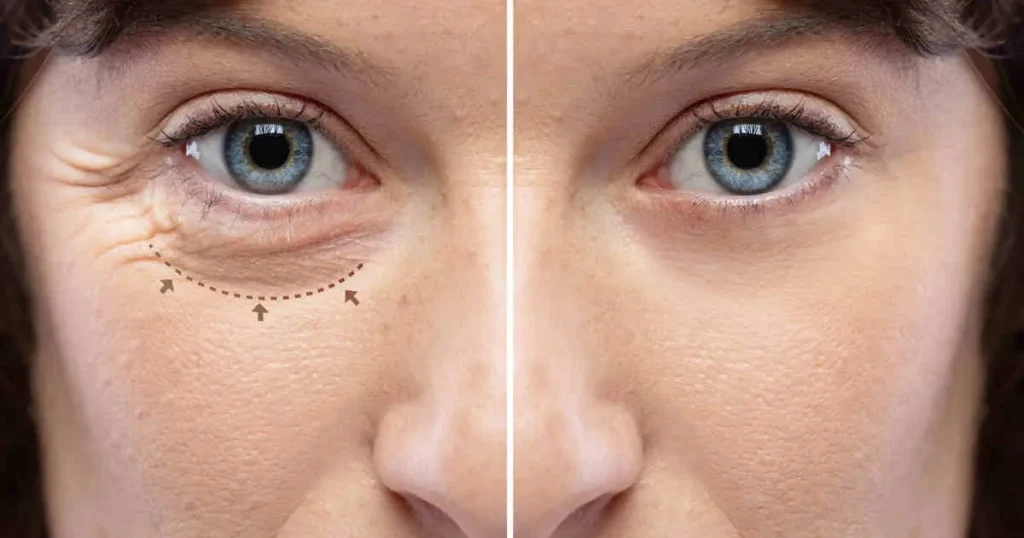
When considering blepharoplasty, or eyelid surgery, it’s important to choose the right location for this procedure. Istanbul, the vibrant and historic city straddling Europe and Asia, has emerged as a popular choice for individuals seeking blepharoplasty. With its state-of-the-art medical facilities, highly skilled surgeons, and competitive pricing, Istanbul offers a compelling destination for this cosmetic surgery.
First and foremost, Istanbul boasts a wealth of experienced and qualified surgeons specializing in blepharoplasty. These surgeons have undergone extensive training and possess in-depth knowledge of the anatomy and aesthetics of the eye region. They are adept at performing both upper and lower blepharoplasty procedures, ensuring optimal results for their patients.
Furthermore, Istanbul is home to a multitude of modern and well-equipped hospitals and clinics that cater to the needs of international patients. These facilities adhere to international standards, employing cutting-edge technology and maintaining strict hygiene measures. Patients can rest assured that their blepharoplasty surgeries will be conducted in a safe and comfortable environment.
- One of the key reasons why Istanbul has become a sought-after destination for blepharoplasty is the affordable cost of the procedure. Compared to other countries, Istanbul offers significantly lower prices without compromising on quality. Patients can achieve remarkable cost savings without compromising on the level of care and expertise provided.
| Advantages of Choosing Istanbul for Blepharoplasty: |
|---|
| 1. Highly skilled and qualified surgeons |
| 2. Modern and well-equipped medical facilities |
| 3. Competitive and affordable pricing |
| 4. Accessible location for international patients |
| 5. Rich cultural heritage and tourist attractions |
In addition to its medical offerings, Istanbul is renowned for its rich cultural heritage and vibrant atmosphere. Patients traveling to Istanbul for blepharoplasty can combine their surgical journey with an unforgettable cultural experience. From visiting iconic landmarks such as the Hagia Sophia and the Blue Mosque to exploring the bustling Grand Bazaar, Istanbul offers a multitude of attractions that captivate and delight.
Ultimately, when choosing a destination for blepharoplasty, Istanbul stands out as a top choice. With its skilled surgeons, exceptional medical facilities, affordable pricing, and cultural allure, Istanbul provides an ideal setting for individuals seeking the transformative benefits of eyelid surgery.
Types Of Blepharoplasty Procedures
These procedures can address various concerns such as excess skin, wrinkles, fat deposits, and muscle laxity in the eyelid area.
One type of blepharoplasty is upper blepharoplasty, also known as upper eyelid lift. This procedure is commonly performed to remove excess skin and fat from the upper eyelids. It can help to create a more refreshed and youthful appearance by eliminating the droopy or heavy look that can occur with age.
Another type of blepharoplasty is lower blepharoplasty, which focuses on the lower eyelids. This procedure can address under-eye bags, puffiness, and wrinkles. It involves the removal of excess fat and tissue, and in some cases, the repositioning of fat to achieve a smoother and more rejuvenated look.
- Transconjunctival blepharoplasty: This procedure is performed on the lower eyelids and involves making an incision on the inside of the eyelid, eliminating the need for a visible external incision. It is often chosen for patients with good skin elasticity and minimal excess skin.
- Laser blepharoplasty: In this procedure, a laser is used to make the incisions and remove excess skin and fat. The laser technology helps to minimize bleeding and reduce scarring, resulting in a faster recovery time for the patient.
- Asian blepharoplasty: This procedure is specifically designed for individuals of Asian descent who desire a crease in their upper eyelids. It involves creating a double eyelid fold to achieve a more open and defined eye shape.
| Type of Blepharoplasty | Description |
|---|---|
| Upper Blepharoplasty | Removal of excess skin and fat from the upper eyelids |
| Lower Blepharoplasty | Addressing under-eye bags, puffiness, and wrinkles in the lower eyelids |
| Transconjunctival Blepharoplasty | Making an incision on the inside of the lower eyelid |
| Laser Blepharoplasty | Using laser technology to make incisions and remove excess skin and fat |
| Asian Blepharoplasty | Creating a double eyelid fold for individuals of Asian descent |
Each type of blepharoplasty procedure has its own advantages and considerations. It is important to consult with a qualified plastic surgeon to determine the most suitable option based on individual needs and goals. The surgeon will evaluate factors such as the condition of the eyelids, overall health, and desired outcomes to provide personalized recommendations.
How To Prepare For Blepharoplasty Surgery
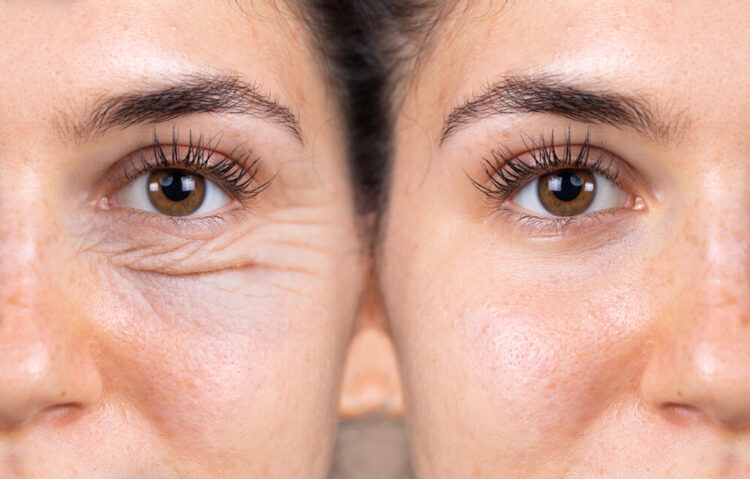
Before undergoing blepharoplasty surgery, it is important to consult with a qualified and experienced plastic surgeon. During the consultation, the surgeon will assess your overall health, examine your eyelids, and discuss your expectations and desired outcomes from the procedure. The surgeon will also explain the risks and potential complications associated with blepharoplasty, as well as the recovery process.
Once you have decided to proceed with the surgery, your surgeon will provide you with specific instructions on how to prepare. These instructions may include:
- Mentioned Carefully following any pre-operative fasting or dietary restrictions.
- Providing a list of medications and supplements to avoid before the surgery, as some substances can increase the risk of bleeding during and after the procedure.
- Detailing the importance of quitting smoking before undergoing blepharoplasty, as smoking can impair the healing process.
- Advising you to arrange for someone to drive you home after the surgery and stay with you for the first 24 hours.
It is crucial to follow these instructions diligently to minimize the risk of complications and ensure a smooth surgery and recovery. Preparing yourself mentally and physically can also significantly contribute to a successful outcome.
| Important Tips for Preparing for Blepharoplasty Surgery: |
|---|
| 1. Educate Yourself: Take the time to research and understand the blepharoplasty procedure, its benefits, and potential risks. This knowledge will help you make informed decisions and manage your expectations. |
| 2. Quit Smoking: If you smoke, it is highly recommended to quit at least two weeks before the surgery. Smoking can impede the healing process and increase the risk of complications. |
| 3. Arrange for Assistance: Since you will not be able to drive yourself home after the surgery, it is important to have someone who can take you to and from the surgical facility. Additionally, having someone to assist you during the initial recovery period can be helpful. |
| 4. Follow Pre-operative Instructions: Adhere to the guidelines provided by your surgeon regarding fasting, medication restrictions, and skincare routines before the surgery. This will support optimal healing and recovery. |
| 5. Plan for the Recovery Period: Make necessary arrangements to ensure a smooth recovery. This includes adjusting your work schedule, organizing your home environment, and gathering any required supplies or prescriptions. |
| 6. Communicate Openly with Your Surgeon: If you have any questions or concerns during the preparation phase, it is essential to discuss them with your surgeon. Clear communication will help alleviate any anxiety and clarify the process further. |
By properly preparing for blepharoplasty surgery, you can enhance the overall experience and increase the likelihood of achieving your desired results. Following your surgeon’s instructions, knowing what to expect, and taking care of yourself during the preparation phase are vital aspects of ensuring a successful surgical journey.
Are There Any Risks Or Complications?
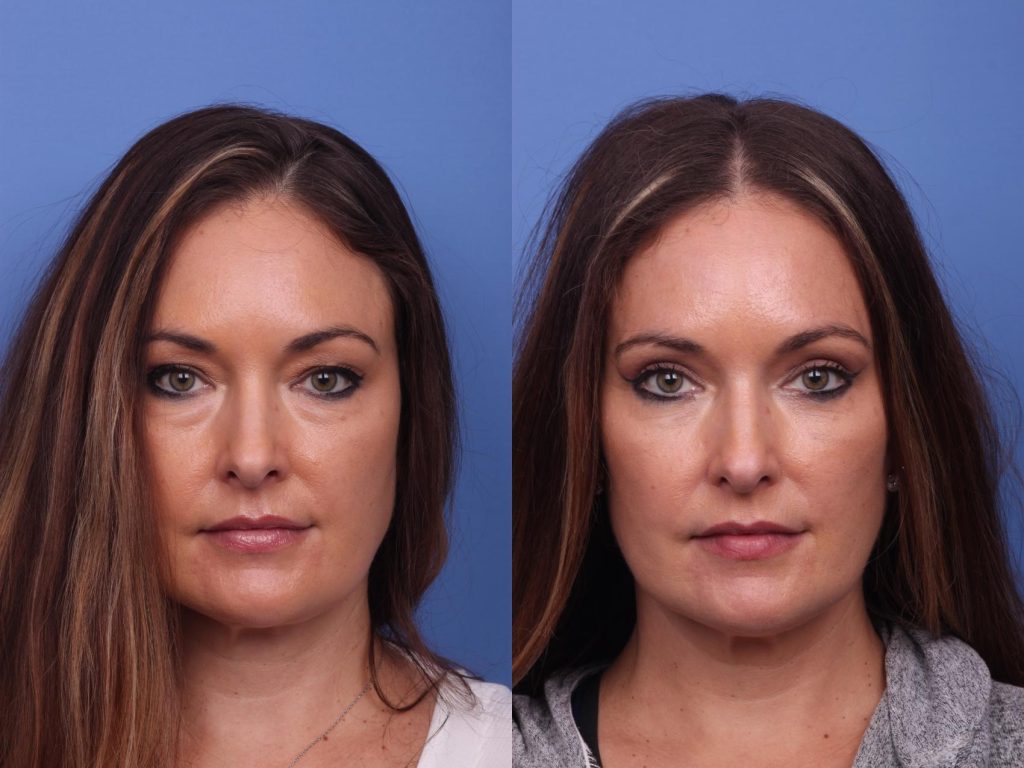
One of the primary risks associated with blepharoplasty is the possibility of infection. As with any surgical procedure, there is a risk of infection at the incision site. However, this risk is minimal and can be reduced by adhering to strict hygiene practices and following post-operative care instructions provided by the surgeon. Infections can usually be treated with antibiotics if detected early.
In addition to infection, there may be risks related to anesthesia. Depending on the type of blepharoplasty procedure, either local or general anesthesia may be administered. While anesthesia is generally safe, there is always a minor risk of adverse reactions or complications associated with its use. Patients should discuss their medical history, allergies, and any concerns with the anesthesiologist prior to surgery.
Another potential complication of blepharoplasty is excessive bleeding or hematoma formation. This can occur if blood vessels are damaged during the surgery or fail to coagulate properly. While bleeding can be managed in most cases, excessive bleeding may require additional interventions, such as the removal of accumulated blood or sutures to control the bleeding.
- Swelling and bruising are common after blepharoplasty and should subside within a few weeks. Proper post-operative care, such as applying cold compresses and elevating the head, can help minimize these side effects. However, in rare cases, persistent swelling or bruising may occur and may need medical attention.
- Temporary changes in vision may also occur following eyelid surgery. Blurriness, dryness, or excessive tearing may be experienced during the initial stages of recovery but should gradually improve. If these symptoms persist or worsen, it is crucial to consult with the surgeon.
- In rare instances, there might be asymmetry or an unnatural appearance of the eyelids after the surgery. This can happen due to various factors, including differences in healing or inadequate tissue removal. Revision surgery may be necessary to correct any such complications.
While the risks and complications mentioned above can occur, it is important to remember that they are relatively rare and complications usually resolve with proper care and follow-up. It is crucial for individuals considering blepharoplasty to choose a qualified and experienced surgeon who can minimize these risks and provide the best possible care throughout the procedure and recovery process.
| Risks | Complications |
|---|---|
| 1. Infection | 1. Excessive bleeding or hematoma formation |
| 2. Anesthesia-related risks | 2. Swelling and bruising |
| 3. Bleeding | 3. Temporary changes in vision |
| 4. Swelling and bruising | 4. Asymmetry or unnatural appearance |
The Blepharoplasty Procedure Step-By-Step
During the pre-operative consultation, the surgeon will assess the patient’s medical history and discuss their goals and expectations. They will also examine the eyelids and determine the most appropriate approach for the procedure. It is essential for the patient to provide accurate information and communicate their concerns to ensure a successful outcome.
Before the surgery begins, the patient is usually given a local anesthetic or sedation to ensure comfort throughout the procedure. The surgeon will then meticulously make incisions along the natural creases of the eyelids. These incisions are carefully placed to minimize scarring and achieve optimal cosmetic results. Once the incisions are made, the surgeon will remove any excess skin, muscle, or fat as needed.
For upper eyelid blepharoplasty, the surgeon may focus on improving droopiness or removing hooded skin. Lower eyelid blepharoplasty, on the other hand, may target bags under the eyes or address wrinkling and sagging skin. Depending on the specific goals of the patient, the surgeon may also perform fat repositioning or grafting to achieve a more balanced and harmonious outcome.
After the necessary adjustments and enhancements have been made, the surgeon will meticulously close the incisions using sutures or surgical tape. The eyes may be lubricated, and a sterile dressing or ointment can be applied to protect the area. The duration of the procedure may vary depending on the complexity and extent of the surgery, but generally, it takes around one to two hours.
In the post-operative phase, patients will typically experience some swelling, bruising, and mild discomfort. The surgeon may prescribe pain medication and recommend cold compresses to alleviate these symptoms. It is crucial to follow the post-operative instructions provided by the surgeon to ensure a smooth and successful recovery. The healing process may take several weeks, during which the patient should avoid strenuous activities and protect the eyes from sun exposure.
Ultimately, the blepharoplasty procedure can offer significant aesthetic improvements and boost the patient’s self-confidence. It is essential to consult with an experienced and qualified surgeon who specializes in eyelid surgery to ensure the best possible results. By following the recommended steps and guidelines, patients can achieve a rejuvenated and more youthful appearance through blepharoplasty.
Recovery Process After Blepharoplasty
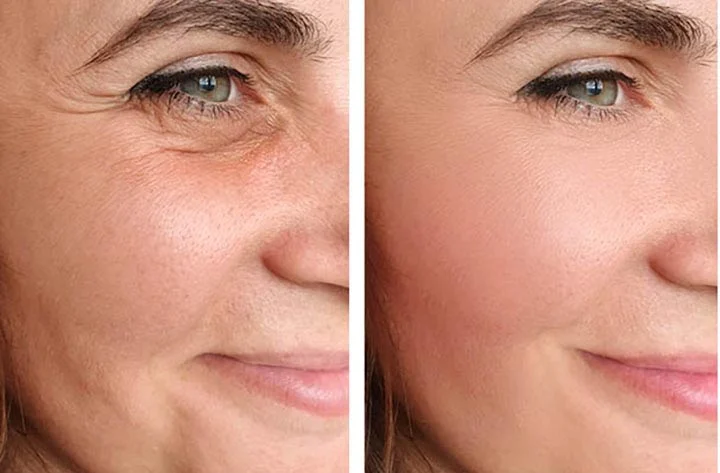
After undergoing blepharoplasty, the recovery process is an important phase that patients must go through. It is crucial to follow the recommended guidelines to ensure a faster and smoother recovery.
During the initial days after the surgery, it is normal to experience swelling and bruising around the eyes. Applying cold compresses to the affected area can help reduce swelling and relieve discomfort. It is important to avoid any strenuous activities, such as heavy lifting or engaging in intense exercise, as these activities can increase blood flow and prolong the healing process.
Additionally, it is essential to follow the post-operative instructions provided by your surgeon. These instructions may include the use of prescribed eye drops, ointments, and medications to manage pain and prevent infection. It is crucial to attend all follow-up appointments to ensure proper healing and address any concerns or complications that may arise.
- Some key points to remember during the recovery process:
| 1. | Keep your head elevated while sleeping to reduce swelling. |
| 2. | Avoid rubbing or touching your eyes to prevent irritation. |
| 3. | Wear dark sunglasses to protect your eyes from sunlight and debris. |
| 4. | Use artificial tears to keep your eyes lubricated if recommended by your surgeon. |
| 5. | Avoid wearing contact lenses until your surgeon gives you permission. |
Patient compliance and patience are key during the recovery process after blepharoplasty. While initial results may be visible within a week or two, it can take several months for the complete healing and final results to be evident. It is important to remember that each individual’s recovery process may vary, and it is essential to communicate any concerns or unusual symptoms with your surgeon.
Tips For A Faster And Smoother Recovery
After undergoing a blepharoplasty procedure, it is important to take proper care of yourself to ensure a faster and smoother recovery. Here are some tips to help you through the recovery process.
1. Follow the surgeon’s instructions: Your surgeon will provide you with specific instructions on how to care for your eyes and promote healing. It is crucial to closely follow these instructions to avoid any complications and ensure a successful recovery.
2. Take prescribed medications: Your surgeon may prescribe medications such as pain relievers and antibiotics to manage any discomfort and prevent infections. It is important to take these medications as instructed to aid in your recovery.
3. Apply cold compresses: Using cold compresses on your eyes can help reduce swelling and bruising. Gently place a cold pack or chilled cotton pads on your eyes for short intervals throughout the day.
4. Avoid strenuous activities: It is essential to avoid any activities that may strain your eyes or increase blood flow to the area, such as heavy lifting or intense workouts. Take this time to relax and allow your body to heal.
5. Protect your eyes from the sun: Exposure to sunlight can be harmful during the early stages of recovery. Wear sunglasses or protective eyewear whenever you are outside to shield your eyes from the sun’s harmful rays.
6. Keep your incisions clean: Follow your surgeon’s instructions on how to clean your incisions properly. Keeping the area clean and free from infection is vital for a smooth recovery process.
7. Avoid smoking and alcohol: Smoking and alcohol consumption can hinder the healing process and increase the risk of complications. It is best to refrain from both during your recovery period.
8. Eat a healthy diet: Proper nutrition plays a significant role in healing. Eat a well-balanced diet rich in vitamins, minerals, and protein to promote tissue repair and enhance your recovery.
9. Get plenty of rest: Give your body the time it needs to heal by getting adequate rest and sleep. Avoid strenuous activities and take short naps throughout the day if needed.
10. Stay hydrated: Drinking enough water throughout the day is crucial for your overall health and recovery. It helps flush toxins from your body and keeps your skin hydrated, aiding in the healing process.
By following these tips, you can significantly improve your chances of having a faster and smoother recovery after blepharoplasty. Remember to consult with your surgeon if you have any concerns or questions during the healing process.
Results And Long-Term Effects
One of the key factors influencing the results of blepharoplasty is the surgeon’s skill and experience. Choosing a highly trained and qualified surgeon is crucial to ensure optimal results. During the consultation, the surgeon will evaluate the patient’s eyelids, discuss their desired outcome, and provide a detailed explanation of the surgical plan. It’s important for patients to openly communicate their expectations and concerns to the surgeon, as this will help in setting realistic goals for the procedure.
In terms of long-term effects, blepharoplasty can provide long-lasting improvements to the appearance of the eyelids. However, it’s important to keep in mind that the aging process continues, and natural changes in the eyelids may occur over time. While the results of blepharoplasty are generally considered permanent, there are certain factors that can affect the longevity of the outcome.
Some individuals may experience a recurrence of excess skin or fat deposits in the eyelids over time. This can happen due to the natural aging process, changes in weight, or genetic factors. Additionally, the effects of blepharoplasty may be influenced by other facial rejuvenation procedures that the patient undergoes in the future. For example, a facelift or brow lift may affect the appearance of the eyelids and impact the overall results of the blepharoplasty procedure.
It’s also important to note that proper post-operative care and maintenance play a significant role in achieving long-term satisfaction after blepharoplasty. Following the surgeon’s instructions regarding wound care, avoiding excessive sun exposure, and maintaining a healthy lifestyle can help prolong the results of the procedure. Regular check-ups with the surgeon are also important to monitor the healing process and address any concerns or complications that may arise.
Cost Of Blepharoplasty In Istanbul
One important factor to consider when thinking about getting blepharoplasty in Istanbul is the cost. While the price of this procedure can vary depending on several factors, including the surgeon’s experience and the complexity of the surgery, Istanbul is known for offering competitive prices for cosmetic surgeries like blepharoplasty.
Blepharoplasty, also known as eyelid surgery, is a surgical procedure that helps improve the appearance of the eyelids by removing excess skin, fat, and muscle. This procedure can be performed on both the upper and lower eyelids to address aesthetic concerns such as baggy or droopy eyelids.
When it comes to the cost of blepharoplasty in Istanbul, it is generally more affordable compared to other countries. The relatively lower cost does not compromise the quality of the procedure or the expertise of the surgeons. Istanbul has emerged as a popular destination for medical tourism, and as a result, several world-class clinics and hospitals offer blepharoplasty at competitive prices.
- It is important to note that the cost of blepharoplasty in Istanbul may vary from one clinic to another, so it is advisable to research and compare prices before making a decision.
| Blepharoplasty Procedure | Cost in Istanbul |
|---|---|
| Upper Eyelid Blepharoplasty | $1,000 – $2,500 |
| Lower Eyelid Blepharoplasty | $1,500 – $3,500 |
| Double Eyelid Surgery | $2,500 – $4,500 |
The above table provides a general idea of the cost range for different types of blepharoplasty procedures in Istanbul. However, it’s important to keep in mind that these prices are approximate and may vary based on individual factors.
While considering the cost of blepharoplasty, it’s essential to prioritize the qualifications and experience of the surgeon. Istanbul is home to many highly skilled and reputable plastic surgeons who specialize in blepharoplasty. Choosing a qualified and experienced surgeon is crucial to ensure a successful and safe outcome.
Traveling to Istanbul for blepharoplasty can also be an opportunity to experience the rich cultural heritage and beauty of the city. Patients can combine their medical trip with a vacation, making the overall cost of the procedure even more attractive.
Choosing The Right Surgeon For Blepharoplasty
Choosing the right surgeon for blepharoplasty is a critical step in ensuring a successful outcome for your procedure. The eyes are a delicate and sensitive area of the face, and it is essential to choose a skilled and experienced surgeon who specializes in blepharoplasty procedures. With the increasing popularity of this cosmetic surgery, there are more options available than ever before. However, not all surgeons are created equal, and it is crucial to do your research and make an informed decision.
When selecting a surgeon for blepharoplasty, it is essential to consider their qualifications and experience. Look for a surgeon who is board-certified and has completed specialized training in oculoplastic or facial plastic surgery. These surgeons have extensive knowledge and expertise in performing eyelid surgeries and are best equipped to understand the unique anatomy and potential complications associated with the procedure.
Another crucial factor to consider when choosing a blepharoplasty surgeon is their track record and patient testimonials. Take the time to research and read reviews from previous patients. This will give you insights into their level of skill, bedside manner, and overall patient satisfaction. You can also ask for before and after photos of their previous blepharoplasty patients to get a better understanding of the surgeon’s aesthetic style and results.
Patient Testimonials And Reviews
If you are considering undergoing blepharoplasty, also known as eyelid surgery, it is important to gather as much information as possible before making a decision. One valuable resource for insights into the procedure, the surgeon, and the overall experience is patient testimonials and reviews. Hearing from individuals who have already undergone blepharoplasty can provide you with valuable insight, allowing you to make a more informed decision about moving forward with the procedure.
When looking for patient testimonials and reviews, there are a few key factors to consider. First, seek out reviews from reputable sources, such as certified plastic surgery organizations or medical review websites. This ensures that the testimonials and reviews are genuine and give an accurate representation of the patient experience. Additionally, it is important to read multiple reviews to get a well-rounded perspective.
Reading patient testimonials and reviews can offer several benefits. Firstly, they can provide you with an understanding of the surgeon’s skill and expertise. By hearing about others’ experiences and results, you can gain confidence in the surgeon’s ability to deliver the desired outcomes for blepharoplasty. Additionally, testimonials and reviews can give insights into the recovery process, allowing you to better prepare for the post-surgery period.
- Positive experiences: Patient testimonials and reviews can offer reassurance and peace of mind by highlighting positive experiences. People who are satisfied with their blepharoplasty procedure will often share their stories, detailing how the surgery has improved their appearance and boosted their confidence. These testimonials can serve as motivation for individuals considering the procedure.
- Negative experiences: While it is crucial to focus on positive testimonials, reading about negative experiences can also be valuable. Patients who have had less successful outcomes may share their stories as a cautionary tale or to provide insights into potential risks and complications. Paying attention to these reviews allows you to understand the possible drawbacks and make an informed decision.
- Realistic expectations: Patient testimonials and reviews can help set realistic expectations for the results of blepharoplasty. By reading about the experiences of others, you can gain a better understanding of the improvements that can be achieved and the limitations of the procedure. This can prevent unrealistic expectations and ensure that you have a clear understanding of what to expect from the surgery.
In conclusion, patient testimonials and reviews are an essential resource when considering blepharoplasty. They provide valuable insights into the procedure, surgeon, and overall experience, giving you a well-rounded understanding of the potential outcomes. By finding reputable sources and reading diverse reviews, you can make a more informed decision and have realistic expectations for the results of your blepharoplasty procedure.
Frequently Asked Questions About Blepharoplasty
This procedure can help individuals achieve a more youthful and refreshed look.
What are the benefits of blepharoplasty?
There are several benefits of undergoing blepharoplasty. Firstly, it can help to reduce the appearance of puffy or droopy eyelids, which can make a person look tired or older than they actually are. Secondly, it can improve the field of vision by removing excess skin that may be obstructing the line of sight. Finally, blepharoplasty can boost self-confidence and improve overall facial aesthetics.
Who is a good candidate for blepharoplasty?
Good candidates for blepharoplasty are individuals who have sagging or drooping eyelids, excess skin or fat around the eyes, or bags under the eyes. It is important for candidates to be in good overall health and have realistic expectations about the results of the surgery. During a consultation with a qualified plastic surgeon, they will assess the patient’s suitability for the procedure based on their specific circumstances.
How is blepharoplasty performed?
Blepharoplasty is usually performed under local anesthesia with sedation. The surgeon will make incisions along the natural creases of the eyelids to minimize visible scarring. They will then remove any excess skin, fat, or muscle as necessary. The incisions are carefully closed with sutures, and the patient is given post-operative instructions for optimal recovery.
What is the recovery process like?
After blepharoplasty, patients can typically expect some swelling, bruising, and discomfort in the treated area. Cold compresses and prescribed pain medication can help alleviate these symptoms. It is important for patients to rest, avoid strenuous activities, and follow the surgeon’s post-operative care instructions to promote proper healing. Most individuals can return to their normal activities within a week to ten days.
What are the potential risks and complications?
As with any surgical procedure, there are risks and potential complications associated with blepharoplasty. These can include infection, bleeding, scarring, and temporary numbness or changes in sensation around the eyes. It is essential for patients to choose a skilled and experienced surgeon to minimize these risks and ensure a safe and successful outcome.
How long do the results of blepharoplasty last?
The results of blepharoplasty are long-lasting, but they are not permanent. The natural aging process will continue over time, and some signs of aging may reappear. However, the improvements achieved through blepharoplasty are typically significant and can last for many years. Maintaining a healthy lifestyle and practicing good skin care can help prolong the results.
| Cost of Blepharoplasty in Istanbul | Choosing the Right Surgeon for Blepharoplast | Patient Testimonials and Reviews |
|---|---|---|
| Blepharoplasty costs in Istanbul can vary depending on several factors such as the extent of the procedure, the surgeon’s experience, the location of the clinic, and additional fees associated with anesthesia and post-operative care. | Choosing the right surgeon for blepharoplasty is crucial for a successful outcome. It is important to research and select a board-certified plastic surgeon who has extensive experience in performing blepharoplasty procedures. Reading patient reviews and testimonials can also provide valuable insights into the surgeon’s skill and patient satisfaction. | Reading patient testimonials and reviews can give potential blepharoplasty patients a better understanding of the procedure and the experiences of others who have undergone it. These testimonials can provide valuable insights into the surgeon’s quality of care, the results achieved, and the overall satisfaction of patients. |
Overall, blepharoplasty is a safe and effective procedure for improving the appearance of the eyelids. By addressing common questions and concerns, individuals considering this surgery can make informed decisions and achieve the desired results.
Please check other blog posts;
Gastric Sleeve Surgery in Istanbul – Benefits?
Gastric Band Surgery in Istanbul Turkey All Details
Recovery And Aftercare For Brazilian Butt Lift BBL Aesthetics
